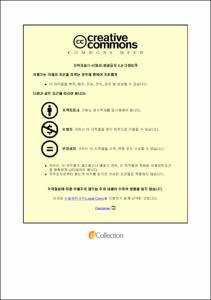The Economic Efficiency of the High Seas Long Line Fishery in Sri Lanka: Special Reference to Dikkowita Harbour of Western Province
- Alternative Title
- 공해에서 조업하는 스리랑카 연승 어업의 경제적 효율성: Western Province의 Dikkowita항을 중심으로
- Abstract
- Sri Lankan Fish and fisheries are sold locally and are equally exported. Retailers, commission agents and assemblers constitute part of the local channels, whereas processors, agents and exporters constitute the export channels. Sri Lanka usually exports its fish and fisheries to America, Europe and South East Asian Country. The excessive local demand for fresh fish and fisheries and dried fish in Sri Lanka come from Thailand, India and Maldives. It is evident that there were ample number of researches performed to study the offshore and coastal fishing in Sri Lanka (Dissanayake, and Sigurdsson, 2005; Laknath et al., 2017; Dias et al., 2018; Herath et al., 2019). However, there is no specific research has been conducted to perform in-depth research about the high sea fishing in Sri Lanka. Also, it is observed that various research focuses on the environmental impacts and sustainability of longline fishing (Baker, and Robertson, 2018; Nagle, 2019; Griffiths et al., 2019) but there is no significant economic impact of it. Thus, it is very important to study the factors that make the major economic growth through high sea fishing. Therefore, this project aims to perform an in-depth study on the economic efficiency of the high seas’ longline fishery in Sri Lanka. This research project provides a special reference to Dikkowita Harbour of Western Province, Sri Lanka. This thesis presents finding based on survey data collected through a representative sample of 54 registered vessels operating in the Dikkowita Harbour. The cost function result shows the relationship between the independent variables i.e. horse power, length of vessel and fishing days, and the dependent variable; total cost. Horse power has a negative relationship with total cost, as one percent rise in horse power results in 0.31% decrease in total cost. Also, a percentage rise in length of vessel and fishing days will lead to 3.58% and 0.46% increases in total cost respectively. From the findings it is identified that more than 50 feet length of vessel has the maximum profit, profit margin. However, ROI is high for vessel length less than 40 feet length of vessel, and vessel length less than 40 ft group has the most cost efficiency while the vessel group with the vessel length between 41 and 45 ft group has the least cost efficiency. This shows that the relationship between total cost and cost efficiency is negative, as cost efficiency increases; the total cost decreases due to the fact that total cost is a function of the cost efficiency.
Keywords:
High seas, Fishery, Longline fisheries, Dikkowita Harbour
- Issued Date
- 2020
- Awarded Date
- 2020. 8
- Type
- Dissertation
- Publisher
- 부경대학교
- Affiliation
- Pukyong National university, Graduate school
- Department
- 대학원 수산경영학과
- Advisor
- Hee-Dong Pyo
- Table Of Contents
- I. INTRODUCTION 1
1. Objective of the Study 1
2. Assumptions and Limitation 3
3. Layout of the Study 4
II. LITERATURE REVIEW 5
1. Global Pattern of High Seas Fishing 5
2. The Sri Lankan Fishery Industry 10
2.1. Fish and Fishery Products’ Exports 11
2.2. Fish and Fishery Products’ Imports 12
2.3. Sri Lankan Production and Consumption of Canned Fish 14
2.4. Fish Price 14
2.5. Fish and Fishery Products’ Consumption 16
2.6. Affiliated Industries 16
2.7. Socioeconomics 16
2.8. Fisherman’s Welfare 17
2.9. World Fisheries 18
2.10. Fish Production 19
2.11. The Production of Marine Fish 19
2.12. The Production of Inland and Aquaculture Fish 21
III. METHODOLOGY 23
1. Introduction 23
2. Conceptual Diagram 23
3. Research Design 24
4. Secondary Research 24
5. Primary Research 24
5.1. Data Collection Method 25
5.2. Research Participants 27
5.3. Data Analysis 27
6. Formulas 27
7. Summary 30
IV. DATA ANALYSIS 31
1. Introduction 31
2. Descriptive Statistics 31
3. Empirical Modal Analysis 34
4. Result of Cost Function 37
V. DISCUSSION AND RECOMMENDATION 41
1. Discussion 41
2. Recommendation 45
VI. CONCLUSION AND FUTURE WORKS 47
1. Conclusion 47
2. Future Works 48
- Degree
- Master
- Files in This Item:
-
-
Download
 The Economic Efficiency of the High Seas Long Line Fishery in Sri Lanka: Special Reference to Dikkow.pdf
기타 데이터 / 1.61 MB / Adobe PDF
The Economic Efficiency of the High Seas Long Line Fishery in Sri Lanka: Special Reference to Dikkow.pdf
기타 데이터 / 1.61 MB / Adobe PDF
-
Items in Repository are protected by copyright, with all rights reserved, unless otherwise indicated.